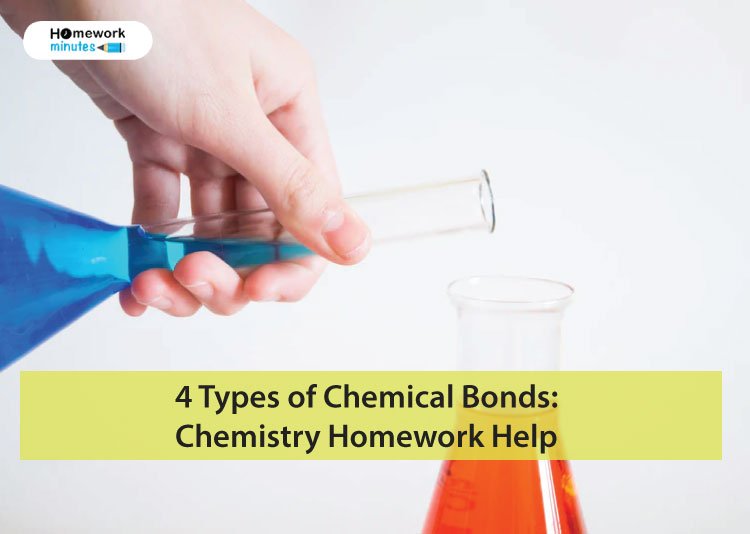While studying chemistry, does your curiosity evoke and you need answers to your questions? One such question is, “how does a variety of atoms hold together in a chemical compound?” The first thought that taps the mind is, whether or not there are types of chemical bonds that enable the atoms to interact. To your information, the atoms tend to arrange themselves in a stable pattern. By forming a structured pattern, they tend to move to fill their outermost electron orbits and gain complete octet. The force that holds the atoms within a molecule together is known as a chemical bond.
Also read:
How to Draw a Lewis Dot Structure | A Complete Guide
Definition of Chemical Bonds
To know further about the term chemical bonds, these are forces that tend to hold atoms together and form compounds or molecules in turn. The chemical bonds include a total of four chemical bond types, that is, 2 primary and 2 secondary. As a glimpse, the atoms having similar electronegativities share electrons among themselves and join to form covalent bonds. The second type is the one in which atoms with greater electronegativity transfer electrons to form ions and stay attracted by a force known as an ionic bond. To learn about the four chemical bond types let’s study in further detail.
Also read:
4 Main Chemical Bond Types With Examples
The overall chemical bond types are of two parts – primary and secondary. Under the primary bond type, there are Ionic and Covalent bonds and under the secondary types, there are polar and hydrogen bonds. Let’s study each of them in detail.
Covalent Bond
As mentioned above, the chemical bonds tie atoms together in a molecule through the interaction of atoms in the outermost electronic shell of an atom. The chief factor responsible for the nature of such an interaction between the two atoms is their electronegativity. As per the statement, the atoms that have equal electronegativity form covalent bonds. In this type of chemical bond, the participating atoms share their valence electron density. Most formed between the two non-metals, the electron density resides between the nuclei and attracts them.
Eg:
Ionic Bond
The second type of chemical bond is the Ionic bond. In this bond type, the exchange of valence electrons takes place between the atoms. The participating atoms are always in a pair of a metal and a nonmetal. Due to the electron exchange between the electronegative and electropositive atoms, the loss and gain of valence electrons take place resulting in attaining the octet rule and becoming stable. These compounds are neutral and combine in many ways to neutralize the charges that they carry.
Eg:
Polar Bonds
The first in the second type of chemical bond is the polar bonds. In this type of bond, the two atoms involved in a covalent bond exert different attractions producing an unevenly distributed charge. As a result of this uneven charge, the resulting bond is known as a polar bond. To sum up, this bond is a case intermediate between ionic and covalent bonding. Out of two participating ends of a molecule, the one end is slightly negatively charged and the other slightly positive.
Examples of polar bonds is a water molecule. In this polar molecule, the oxygen end is slightly positive whereas the hydrogen end is slightly negative. Know you know why a few substances dissolve in water easily while others fail to.
Hydrogen Bonds
The last type of a chemical bond is the hydrogen bonds. In other terms, the hydrogen bonds are also polarized bonds since the two hydrogen atoms involved in water can form a linkage known as a hydrogen bond. Thus, the structure of a hydrogen bond is such that it forms a lattice. Though hydrogen bonds aren’t as strong as a covalent bond since it has only 1/20th of the strength to that of the latter. However, the bond still results in giving the unique properties of molecules such as high surface tension, specific heat, and the heat of vaporization. In everyday life, hydrogen bonds are helpful in processes such as replication and defining the shape of DNA molecules.
Key Differences Between Ionic Bonds and Covalent Bonds
| Ionic Bonds | Covalent Bond | |
| Description | Ionic bonds are the ones formed between a metal and a nonmetal.
In the process of ionic bond formation, the nonmetal attracts the electron from a metal. |
Covalent bonds are the ones formed between two nonmetals having similar electronegativities.
In the process of covalent bond formation, the atoms share electrons in their outer orbits. |
| Polarity | High | Low |
| Shape | No definite shape | Definite shape |
| Melting Point | High | Low |
| Boiling Point | High | Low |
| State at Room Temperature | Solid | Liquid or Gas |
| Examples | Sodium chloride (NaCl), Sulfuric Acid (H2SO4 ) | Methane (CH4), Hydrochloric acid (HCl) |
| Chemical Species | Metal and nonmetal (remember hydrogen can act either way) | Two nonmetals |
If you’re struggling with your chemistry topics and need instant help in completing your assignment, you can seek help from Homework Minutes. We provide chemistry homework help 24*7 from the top-experts. Find help with any topic that daunts you! Chat with us now.
Related Questions
International Investment Position Data/ GDP Data


